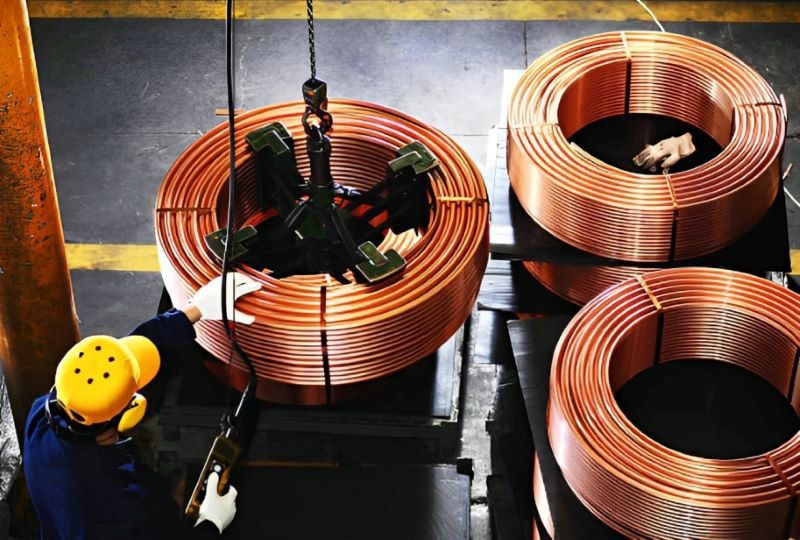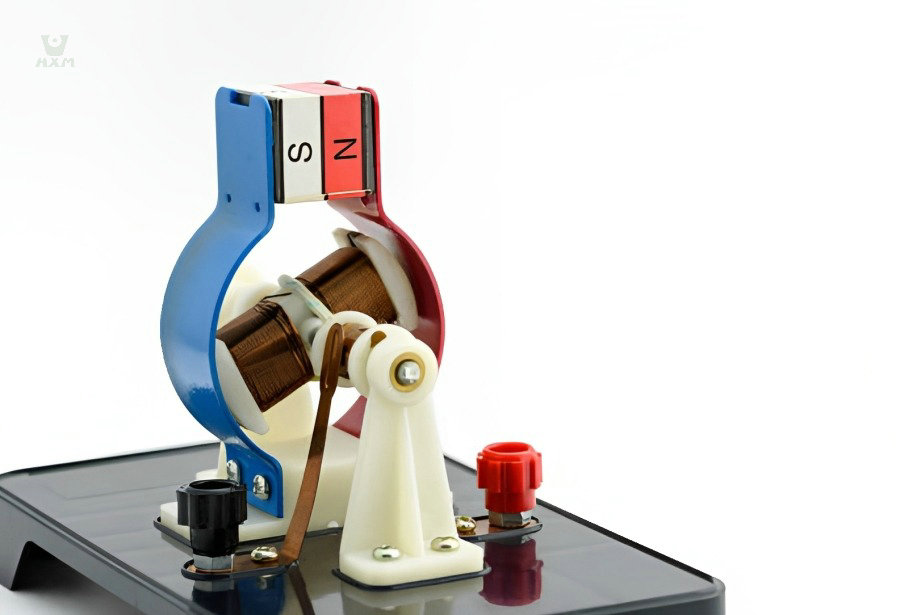Alloyours
Forged in Brilliance:
Unleash the Power of Copper Alloys!
Embrace Strength, Beauty, and Versatility
with our Premium Copper Alloy Products.
Our Copper Alloy Products
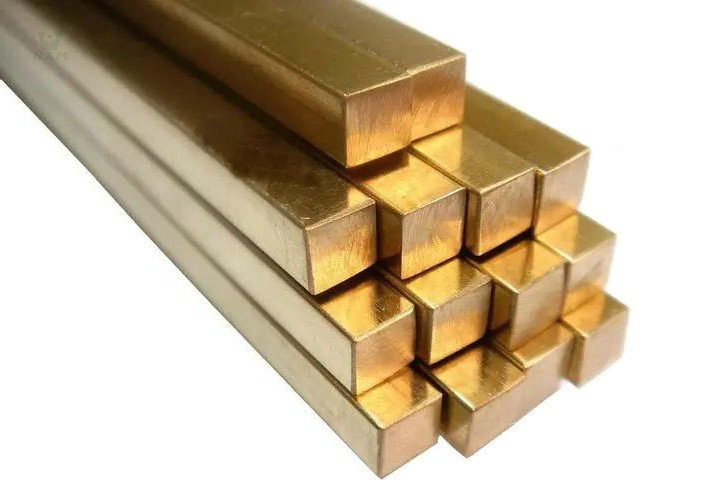
Brasses

Bronzes
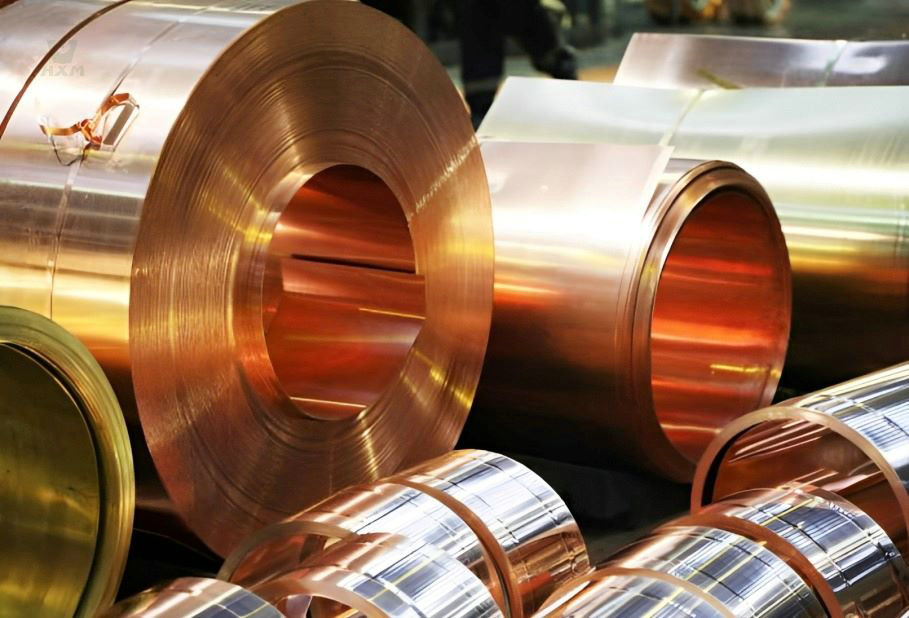
Cupronickel

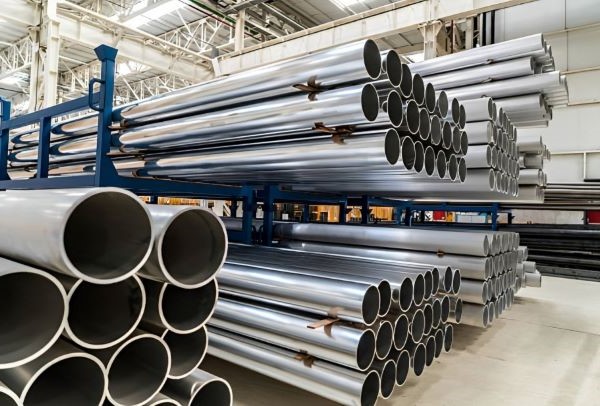

About Us
14+ Years Exporting Experience
Throughout these years, Alloyours have honed our expertise in international trade, expanding our reach to serve clients in diverse regions around the world.
your reliable and trusted partner in the global market
Our extensive export experience has equipped us with a deep understanding of the complexities and nuances of cross-border transactions. We are well-versed in navigating international regulations, customs procedures, and logistics, ensuring seamless delivery of our products to customers across continents.
- Unparalleled Expertise
- Quality & Precision
- Customer-Centric Approach
- Sustainability & Responsibility
to Harness the Power of Copper for Your Next Project!
Contact Us Now
What is copper alloy?
Copper alloy is a type of metal alloy that is composed primarily of copper, along with one or more other elements. These additional elements are added to copper to enhance its properties and create alloys with specific characteristics tailored to various applications. Common alloying elements include zinc, tin, nickel, aluminum, and more.
Copper alloys have been used by human civilizations for thousands of years due to their remarkable properties and versatility. The addition of different elements to copper can result in a wide spectrum of alloys, each with unique characteristics that cater to specific needs.
Brass, one of the most well-known copper alloys, combines copper with zinc to create an alloy with a golden hue, excellent machinability, and corrosion resistance. It finds applications in musical instruments, plumbing fixtures, and decorative items.
Bronze, another ancient copper alloy, is created by mixing copper with tin. It boasts high strength, corrosion resistance, and a beautiful reddish-brown color, making it ideal for statues, bearings, and historical artifacts.
Cupronickel, or white copper, blends copper with nickel to form an alloy that exhibits superb resistance to corrosion in seawater. This alloy is commonly used in marine applications, heat exchangers, and coinage.
From electrical connectors and automotive parts to marine hardware and artistic sculptures, copper alloys have found their way into countless industries, serving as indispensable materials for various purposes.
With their exceptional performance, durability, and aesthetic appeal, copper alloys continue to play a crucial role in advancing technology, art, and modern civilization as a whole. As a premium copper alloy supplier, we are dedicated to delivering top-quality materials that unlock the full potential of these remarkable alloys for your specific needs. Explore the world of copper alloys with us and witness the extraordinary possibilities they offer in transforming your projects into reality.
What are different types of copper alloys?
There are numerous types of copper alloys, each with unique compositions and properties to suit diverse applications. Some common types of copper alloys include:
Brass is a copper alloy composed primarily of copper and zinc, with varying proportions of each element. It is one of the most widely used copper alloys due to its exceptional combination of properties. Brass exhibits a bright golden appearance, making it popular for decorative applications and artistic creations. It offers excellent machinability, making it ideal for precision parts and components. Additionally, brass has good corrosion resistance and is often used in plumbing fixtures, musical instruments, electrical connectors, and various industrial fittings. Its versatility, aesthetic appeal, and ease of fabrication make brass a highly sought-after material across multiple industries.
Bronze is a copper alloy that typically contains copper as the main element, along with varying amounts of tin. It is admired for its unique reddish-brown color and is well-regarded for its exceptional strength, durability, and resistance to corrosion. Bronze has a rich history and has been used for centuries to create sculptures, statues, and historical artifacts. Due to its excellent machinability and wear resistance, bronze is also utilized in bearings, gears, and bushings. Additionally, its acoustic properties make it a popular choice for musical instruments. Bronze's versatility and classic appeal have cemented its place as a significant material in both artistic and industrial applications throughout history and into the modern era.
Phosphor bronze is a copper-tin alloy that contains a small amount of phosphorus, which imparts unique properties to the alloy. It is known for its exceptional strength, wear resistance, and spring-like qualities. Phosphor bronze is widely used in applications where high fatigue resistance is required, such as in springs, electrical connectors, and bearings.
The addition of phosphorus to the bronze composition improves its machinability and enhances its ability to withstand high loads and repetitive stress. This makes it a favored choice in demanding environments where durability and reliability are essential. Phosphor bronze is also valued for its corrosion resistance, making it suitable for marine and electronic applications.
Its combination of mechanical properties and corrosion resistance has earned phosphor bronze a reputation as a high-performance material across a range of industries, including aerospace, automotive, electronics, and precision engineering.
Beryllium copper is a copper alloy that contains a small amount of beryllium, typically in the range of 0.5% to 2.7%. This alloy is renowned for its exceptional combination of properties, making it highly sought after in various industries.
Beryllium copper exhibits remarkable strength, hardness, and electrical conductivity, making it suitable for a wide range of applications that require high performance and reliability. It is commonly used in aerospace and defense industries for springs, connectors, and electrical contacts due to its excellent conductivity and resistance to wear and fatigue.
Furthermore, beryllium copper offers good corrosion resistance, making it a preferred choice in harsh environments where other materials might degrade. Its unique properties and ability to retain strength at elevated temperatures have also led to its use in oil and gas exploration equipment, precision instruments, and electrical components.
However, it's important to note that beryllium copper should be handled with care, as beryllium is a toxic element. Manufacturers and users of beryllium copper must follow appropriate safety measures to ensure safe handling and disposal of the material.
Despite its potential challenges, the exceptional mechanical and electrical properties of beryllium copper have secured its position as a valuable material in critical applications that demand high performance and reliability.
Aluminum bronze is a copper-aluminum alloy that combines copper with varying amounts of aluminum, typically ranging from 5% to 12%. This alloy is highly regarded for its outstanding strength, corrosion resistance, and excellent machinability.
Aluminum bronze offers remarkable mechanical properties, making it suitable for applications that require both high strength and resistance to wear and corrosion. It is commonly used in marine environments due to its exceptional resistance to seawater corrosion, making it ideal for marine hardware, propellers, and ship fittings.
The alloy's excellent machinability and ability to retain strength at elevated temperatures also find application in industrial equipment, such as bearings, gears, and valves.
Moreover, aluminum bronze demonstrates good electrical and thermal conductivity, contributing to its use in electrical connectors, welding electrodes, and heat exchangers.
This versatile alloy's ability to combine durability, corrosion resistance, and machinability makes it a preferred choice for a wide range of applications in industries like marine, aerospace, automotive, and industrial machinery. Its consistent performance in demanding environments has earned it a reputation as a reliable material for critical components and engineering solutions.
Nickel silver, also known as German silver or white copper, is not actually silver but a copper-nickel-zinc alloy. It typically consists of copper with varying proportions of nickel and zinc, and sometimes includes trace amounts of other elements.
Nickel silver is admired for its silver-like appearance, making it an economical alternative to silver in various applications. It is widely used in the production of silverware, jewelry, and musical instruments due to its lustrous and tarnish-resistant surface.
Additionally, nickel silver has good mechanical properties, including excellent malleability and formability, making it a popular choice for crafting intricate designs in tableware, decorative items, and ornamental pieces.
Although it lacks the same level of electrical conductivity as pure copper, nickel silver still exhibits decent electrical and thermal conductivity, allowing it to be used in electrical connectors and conductive components.
This versatile alloy has found its way into various industries and is appreciated for its aesthetic appeal, durability, and cost-effectiveness in creating objects that resemble silver but at a more affordable price point.
Silicon bronze is a copper alloy that contains copper as its primary element, with the addition of silicon, usually in the range of 2% to 3%, and often small amounts of other elements like zinc and tin. This alloy is known for its exceptional strength, corrosion resistance, and weldability.
The addition of silicon enhances the mechanical properties of the bronze, making it well-suited for applications that require high tensile strength and excellent fatigue resistance. Silicon bronze is widely used in marine environments due to its outstanding resistance to seawater corrosion, making it ideal for marine hardware, propellers, and underwater fittings.
Additionally, silicon bronze's excellent weldability and formability make it a favored choice in construction and architectural applications, such as welding, fasteners, and structural components.
Its attractive appearance, coupled with its durability and resistance to atmospheric corrosion, has led to its use in decorative items, sculptures, and architectural features.
Silicon bronze's ability to offer a balance of mechanical properties and corrosion resistance makes it a versatile material that finds application in marine, construction, artistic, and industrial sectors, providing solutions for both aesthetic and engineering needs.
Copper-nickel-iron alloys, commonly known as Monel, are a group of copper-based alloys that contain significant amounts of nickel and iron, along with trace elements such as manganese and copper. Monel alloys are renowned for their exceptional resistance to corrosion in various environments, making them suitable for a wide range of applications.
Monel alloys come in different grades, with Monel 400 and Monel K500 being the most well-known. Monel 400 is characterized by its high strength, excellent corrosion resistance in seawater, and resistance to a variety of acids and alkalis. It finds extensive use in marine and chemical processing industries, as well as in oil and gas applications.
Monel K500, on the other hand, exhibits enhanced mechanical properties and can be further hardened through age-hardening treatments. It is used in demanding environments, such as high-pressure valves, pump shafts, and drilling equipment.
Both Monel alloys are highly versatile and find application in marine engineering, aerospace, chemical processing, and a host of other industries where corrosion resistance and high performance are critical.
Due to their exceptional properties, Monel alloys are considered premium materials that offer reliable solutions in harsh and corrosive environments, making them a top choice for various challenging engineering applications.
Copper-nickel-silicon alloys are a group of copper-based alloys that contain significant amounts of nickel and silicon, along with trace elements such as manganese and copper. These alloys are known for their excellent combination of properties, making them suitable for a variety of applications.
The addition of nickel provides copper-nickel-silicon alloys with high strength and corrosion resistance, particularly in marine environments. These alloys are commonly used in marine engineering for seawater piping systems, heat exchangers, and other marine components.
The addition of silicon enhances the mechanical properties of the alloys, including their wear resistance and high-temperature strength. This makes copper-nickel-silicon alloys ideal for various industrial applications, such as bearings, bushings, and connectors.
Furthermore, copper-nickel-silicon alloys exhibit good castability, allowing them to be used in the production of intricate and complex components through casting processes.
These versatile alloys are valued for their reliability, corrosion resistance, and mechanical properties, making them a preferred choice in marine, industrial, and other engineering applications where performance and durability are essential.
These are just a few examples, and there are many other specialized copper alloys tailored for specific industrial, commercial, and artistic purposes. The wide variety of copper alloys offers a rich selection of materials to meet diverse engineering challenges and artistic endeavors.
How do copper-nickel alloys compare to other copper-based alloys
in terms of corrosion resistance?
| Copper-Based Alloy | Corrosion Resistance |
| Copper-Nickel Alloys | Excellent resistance to seawater corrosion and various acids and alkalis. Ideal for marine and chemical applications. |
| Copper-Nickel-Silicon Alloys | Good corrosion resistance in marine environments and high-temperature strength. Used in marine engineering and industrial applications. |
| Brass | Moderate corrosion resistance; susceptible to dezincification in certain environments. Commonly used in plumbing and decorative applications. |
| Bronze | Good corrosion resistance and widely used in marine environments and artistic applications. May undergo patination for aesthetic appeal. |
| Cupronickel | Excellent resistance to seawater corrosion and biofouling. Used in marine and offshore applications. |
| Phosphor Bronze | Good corrosion resistance, particularly in marine environments and electrical connectors. |
| Beryllium Copper | Moderate corrosion resistance and high strength. Commonly used in aerospace and electrical applications. |
| Aluminum Bronze | Good resistance to corrosion and wear. Used in marine and industrial applications. |
It is important to note that the corrosion resistance of copper-based alloys can vary depending on their specific composition, environmental conditions, and application. Proper alloy selection based on the intended use is crucial to ensure optimal corrosion resistance and performance.
What are the mechanical properties of various copper alloys?
| Copper Alloy | Tensile Strength (MPa) | Yield Strength (MPa) | Elongation (%) | Hardness (HV) | Young’s Modulus (GPa) |
| Copper | 200 – 300 | 50 – 220 | 30 – 70 | 30 – 120 | 110 – 128 |
| Brass | 300 – 600 | 150 – 550 | 10 – 40 | 65 – 180 | 100 – 120 |
| Bronze | 400 – 600 | 150 – 500 | 10 – 30 | 80 – 200 | 96 – 125 |
| Cupronickel | 300 – 650 | 150 – 600 | 10 – 50 | 70 – 220 | 130 – 140 |
| Phosphor Bronze | 400 – 700 | 250 – 600 | 5 – 25 | 70 – 220 | 120 – 130 |
| Beryllium Copper | 950 – 1400 | 345 – 1250 | 2 – 20 | 210 – 400 | 130 – 140 |
| Aluminum Bronze | 450 – 900 | 250 – 650 | 5 – 30 | 80 – 230 | 110 – 130 |
| Nickel Silver | 400 – 750 | 150 – 500 | 10 – 40 | 80 – 250 | 90 – 130 |
It is important to note that the mechanical properties of copper alloys can vary widely depending on their specific composition, heat treatment, and manufacturing processes. The values provided in the table are approximate ranges and may differ for different grades and forms of each alloy. Additionally, these properties can be further optimized through alloy design and processing techniques to meet specific application requirements.

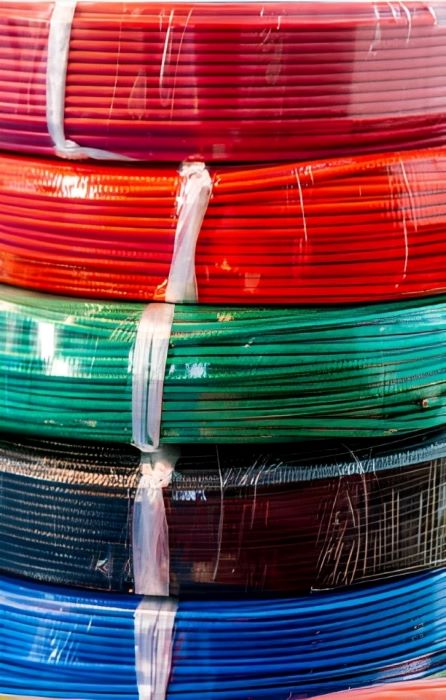
Application
What Is Copper Alloy Used For?
Copper alloy is used in a wide range of applications due to its unique properties. Some common uses include:
Aerospace
Automotive
Construction
Coins&Currency
Electronics
Marine
Medical Devices
Industrial
Building The Future
Latest From the Blog
Contact US
Ready to take your projects to new heights with premium copper alloy solutions? Our expert team is here to provide tailored advice, competitive pricing, and exceptional customer service. Reach out to us today and let’s create success together!


